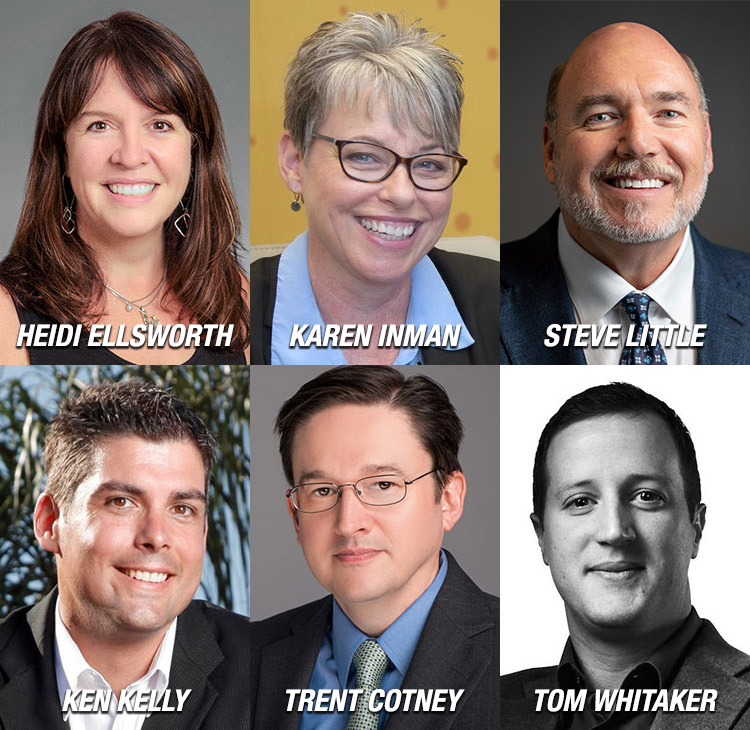The Roofing Technology Think Tank hosted a panel on roofing technology at last week’s International Roofing Expo in Nashville, Tenn. Panelist Ken Kelly is an RT3 board member and president of Kelly Roofing, a 47-year-old family business in South Florida. He shared his thoughts with Roofing Technology SmartBrief.
Roofing Technology SmartBrief: Tell us about Kelly Roofing. How long have you been in business, what part of the country do you serve, how big is the company?
Ken Kelly: Kelly Roofing was started in 1972 by my father, Joe Kelly Sr., in Naples, Florida. We continue to operate in the South Florida market for decision-makers of existing roofs. Our staff of 230 works on almost 10,000 roofs each year, offering both repair and replacement services to all kinds of roof systems and building uses.
RTSB: What is your role in RT3?
Kelly: As a board member of RT3, I assist with direction, decisions and our core focus. It’s important to me that our industry’s disruption occurs from within in an inclusive and open way for all to participate.
RTSB: What was your overall impression of the International Roofing Expo?
Kelly: The IRE is the pinnacle event for our industry. It’s the one event each year that showcases products, techniques, training and best practices for the roofing industry. As products are always evolving, it’s important to stay up on the changes so we are utilizing the latest products to help our customers.
It would be a mistake to miss out on all the show floor “how-to” events. This is the quickest way to understand the techniques of successful roof performance. I believe in Kaizen, a lifetime commitment to learning and improvement, which is why attending the continuing education tracks is a must.
Unlike other industries, roofing is one big family full of big-hearted, dedicated people who love to help others. The IRE is a great way to catch up with old friends, meet new ones and seek advice from those who have been there.
RTSB: Tell us about the RT3 meet-up at Vanderbilt University
Kelly: RT3 has several Task Teams. From Future Workforce to Communications and from Technology to Showcases, our members scour the globe and bring back valuable insight that may have an impact on our industry. Our meet-up at Vanderbilt University, like the others before it, was a chance for the Task Teams to present their hard work since our last time together. It’s amazing to see the speed at which our world is changing and I’m glad to be a part of an organization dedicated to parsing out the noise to bring the best possibilities to our industry.
RTSB: You participated in the RT3 roofing technology panel. How was the response from attendees?
Kelly: As one of the largest attended sessions at IRE, it was clear just how thirsty roofers are for technology. I’m impressed by the amount of technology already implemented by roofers and their willingness to invest in new possibilities. The content shared by the panel was very well received and clearly succeeded in our mission of improving lives in the roofing industry.
RTSB: What was your role in the panel? What was your message?
Kelly: Each panelist took an emerging technology and spoke about its possibilities and current deployment. I focused on augmented reality, a way to cast digital reference in the physical world. My discussion was focused mainly around the Microsoft HoloLens product and how it could be utilized for training, inspecting and visualizing roofs. This product and the work Microsoft is doing around it is very exciting and could easily improve our lives and the lives of others.
RTSB: How important is adoption of new technologies to the future of the roofing industry?
Kelly: There’s an infamous quote from the movie “Tommy Boy” staring the late Chris Farley, “You’re either growing or your dying!” I believe that quote perfectly sums up the importance of embracing new technologies in the roofing industry.
RTSB: What particular technologies do you see as key?
Kelly: We are still in the infant stages of drones, augmented reality, virtual reality, digital fabrics, robotics, Internet of Things, software automation, visualization, GPS and so much more. The key is not to think about the technology and then apply it to our industry. The key is to ask, “What JOB are we performing for our customers?” Hint: It’s not putting on and maintaining roofs.
RTSB: What technologies has Kelly Roofing adopted?
Kelly: We are about to wrap up a 5-year partnership with Microsoft focused on business process automation where we have one software platform to run our entire business. The software is a silent manager, ensuring the promises we made are delivered. This includes marketing, estimating, sales, procurement, ordering, scheduling, accounting, HR, communications, billing and asset tracking.
RTSB: How have these technologies improved your business?
Kelly: Being selected as one of only 13 companies in the world to receive the Visionary Award from Microsoft in 2015 was a huge honor, but it is the opportunities we have created for our employees and the large group of loyal customers that I’m most proud of.
RTSB: What technologies on the horizon do you see as the next step forward for roofing?
Kelly: We are now working on an IoT project that we believe will make a big difference for roof owners and roofers.
RTSB: Anything you care to add?
Kelly: This was fun.
Sign up for the RT3 Smart Brief for more great industry news and technology talks from RT3.

